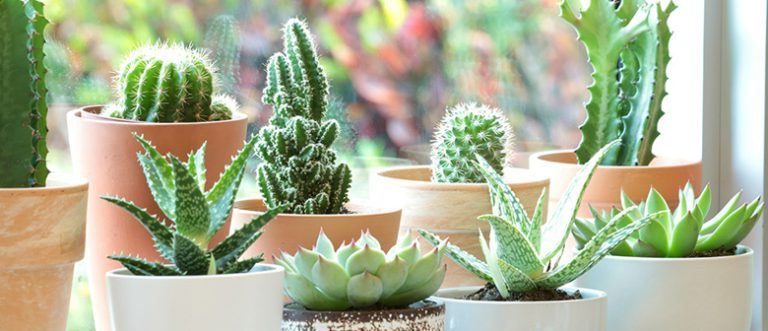1. Overwatering
This is one of the most common problems when growing cacti and succulents. Plants should be watered in the summer, on a 7 to 10 day intervals in well-drained soils. You should water more often if the soil is sandy and less often if the soil is heavier. The best way to know if they need water is to check whether the soil is dry below the surface before watering. If in doubt, don’t water. In the winter, irrigation should be reduced because most cacti go dormant.
2. Underwatering
Cacti need water to live just like any other plant. Many cacti and succulents do not need to be watered over the winter, but is best to give them a little bit of water to prevent the loss of roots. If a plant’s roots have dried up, water it very lightly until roots take hold again.
3. Not providing the proper amount of sun light
Just because cacti and succulents are often found in dry habitats, doesn’t mean they can be placed or planted in full sun. Many species grow where they get a degree of shelter from rocks, larger plants and the environment. So, you should be careful, to give your plants a bit of a shelter. Young barrel and columnar cacti and some Yuccas can be sunburn and the scars are permanent.
4. Not using the proper soil mix
Many beautiful and inexpensive plants from local nurseries are planted in a peat-based medium. This medium is hard to water correctly and inevitably becomes too wet or too dry. The best soil to use is cactus potting soil, but mixed with something like perlite, sand, or small gravel.
Good soil mixes for Lithops include 10 to 20 % potting soil and 90 to 80 % gravel. For most cacti and succulents a 30 to 40 % potting soil and 70 to 60 % gravel is recommended. A 50 % potting soil with 50 % perlite is a good mix for succulents like Sanseverias, small Agaves, and Yuccas. A 50 to 60 % potting soil and 50 to 40 % gravel is suggested for leafy succulents like Adeniums. Soil used for cacti and succulents must have some draining material.
See also: Homemade potting soil for succulents
5. Fertilizing improperly
A common cacti and succulent misstep is the idea that they don’t need fertilizer. Like any other plant, they need a variety of macro and micro-nutrients to survive. Even though they may do fine without, sometimes a bit of fertilizer can be the key to having lush and green plants.
6. Leaving plants root-bound too long
The roots must have enough room to grow and thrive. The roots of plants that have grown in a pot for a long time completely fill the entire pot in a tight mass. This creates issues for the soil (it will become dry) because water may have a hard time penetrating the mass. The roots also can’t get to the nutrients and the plant could die. You should repot when roots begin to show through the draining hole.
7. Ignoring the plant’s requirements for growth
It is very important to know the growth habits of your plants. Most cacti and succulents should be grown at temperatures between 75 to 90 ºF (24 to 32 ºC), and some may require trace minerals in the soil. These can be provided by fertilizing, but the common fertilizers must be used appropriately, usually at 0.25 strength, or a slow-release product should be used. A fertilizer for tropical plants is perfect. If your plant is variegated (light or pale green tinging towards white or silver), use a fertilizer with a lower content of nitrogen.
8. Burning plants due to phototoxicity
Overall, cactus and succulents do not get infested by insects as much and as often as other plants. However, they are susceptible and on occasion we must treat them with insecticides when manual removal of bugs is not enough. Plants treated with chemicals must be protected from the sun. Otherwise they will get burned easily, especially with products that contain oils. You should isolate plants with scale or other insects, and protect them from the sun.
See also: Tips for growing healthy succulents
Source: worldofsucculents.com

